Some of these experiments are really simple and some of them were quite troublesome… that’s what happens when you have a wide age range of scientists roaming in your house!!! There is a whole lot real science here… the shadow clock that took days because half way through it, some short person, called “nobody”, went and rubbed out half the shadows. The beautiful salt crystals that were dropped and spattered all over the floor because “nobody” was touching, the sundial that “nobody” kept shifting between hours and we would have to start again and again and again…
Here we go Se7en + 1 Experiments: Please feel free to click on any picture that you would like to see bigger.
- Prism Play: Popped a prism and a shimmering rock alongside each other. The prism made rainbows, the light bent and changed colors. The rock didn’t! Why? Because the rock wasn’t smooth enough and the light was reflected off it at so many little angles. Whatever the reason the prism provided many faceted hours of play!!!
- Rocking Rainbows: Watering fun on a summer afternoon. Each water droplet is a prism and makes its own tiny rainbow… together they make a large rainbow.
- Crusty Crystals: We wanted to make our own prisms and so set out to craft some crystals. We made three types of crystal using sugar, epsom salts and table salt. First we tied a paper clip to a pencil using a piece of cotton, so that it would hang into our jar. We used hot water and stirred in a spoon of sugar until it dissolved, then added another spoonful and stirred and kept at it until no more sugar could be dissolved. We added a drop of food coloring into the mixture to make it pretty, aesthetics and all that!!! Popped our pencil across the top and left them to form crystals. Then we did the same with salt and epsom salts. After being dropped and fiddled with a fair number of times we had some nice crystals forming on the jars themselves. The paperclips not so much, but that was due to interference on a major scale, rather than experimental failure!!!
- Spoon Reflections: Here is another simple one for the sake of my sanity! Looking at the differences between concave and convex lenses.
- Mirror masterpieces: And from lenses to reflections… We decided to try these out. Place a picture on one half of a piece of paper. Balance a mirror down the middle of the page, with the mirror facing the picture. Watch the picture in the mirror and draw it on the blank side of paper. Turns out it is rather tricky and not nearly as easy as you might think!!!
- Shadow Clock: This was great fun, even with “nobody” helping! Turns out our time goes in a straight line around here, forget about those books where the shadow dutifully marches around a central point and you can plot it with stones or whatever… no we are more, um, one directional!!! Mark a point, that you can easily come back to as your reference, and then every hour dash out stand on your reference point and draw around the resulting shadow.
- Sun Catching: Now everybody knows you must never ever look at the sun. So how do you study it. Take a telescope and shine it at the sun. You can also use binoculars, but the telescope worked much better because it was on a tripod and could be “held” still. Beneath the eye piece place a piece of paper. Use the focus to get a clear image and draw around it… you can also look for sunspots like this, but it was late in the day after a bazillion experiments and everyone was happy to have the sun captured on paper.
And our Se7en + 1 th experiment:
- Sun Dial: Finally we were so inspired by the shadow clock that we thought we would try for a sundial and I knew there would be difficulties – maybe there could be a life lesson there!!! Now the easy way would be to make a gnomon (that’s the triangular thing that stands up in the middle of the clock), pop it onto some strong card, place it in the sun and mark off where the shadow falls every hour and you would have a version of a clock.
But we wanted more… in se7en steps:
- So we used an old tile instead of cardboard and found the center of it.
- From the center we marked off fifteen degree lines around the tile, every fifteen degrees we made an “hour” line.
- Then to make our gnomon: We looked up our latitude in an atlas, and marked the angle on a piece of stiff cardboard.
- We attached a pencil along the top of the cardboard to make a good shadow and then we attached it to our base with plasticene.
- Next we got out a compass and and lined our sundial up with the north/south pole…
- And then the number of variables: seasonal (the suns path moves), magnetic north vs. true north, and a heap of others totally overcame us!!! And we settled to line it up with the sun on an hour and see that for the following couple of hours the shadow had moved around the clock. A compromise, I know, but we all managed to save face (yes that’s a pun!!!)
- If you are looking for a place to make sundials then head on over to this page that has links to all that you could possibly need regarding the making of sundials.
That’s us. Lights, Lines and Lenses are done for a little while!!!
When Ordinary Life Magic Invites the world to join their Science Fair… we drop everything, albeit at the last minute, and join in!!!
If you want to join up or find a great resource with heaps of experiments then click on the button!!!
I popped this post onto the Works For Me Wednesday Site – go and have a look there for all sorts of tips on absolutely anything.
And our Next post: Se7en’s Fabulous Friday Fun – Link Up is next… join us!!!






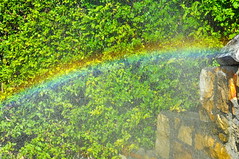
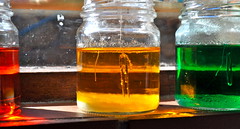







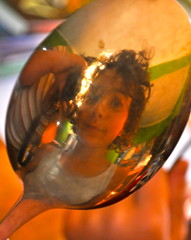



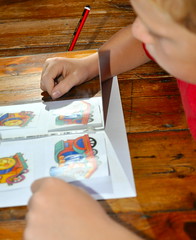





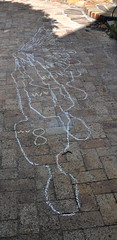


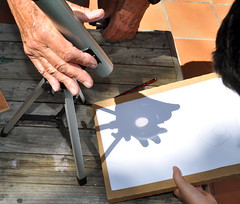




















Ha! That’s what happens when you live on the equator! No angling shadows. 🙂 Maddie will love that one. Shadows and chalk!?!
So many great experiments here!
Hay S, Glad you like them… Our house looks like a science bomb went off in it!!! Thanks for the motivation to get going!!! Have a fun weekend!!!
We had a science week to kick us off with school again after Christmas. It was a great success, thanks for the idea!
Hi K, You are so right a science week really helps to get the idea of school back into our minds!!! We are getting back into the concept of school and next week is most likely our last week of vacation – gasp!!! I’ve said it now!!!
I love the shadow clock! I will have to try that with my kids. I should do it now since we are near the equinox and again in June at the solstice to see the biggest difference. We usually have too much snow on the ground to do it in December.
Have you tried making crystals using borax? It is a natural laundry detergent booster and you can find it in the detergent aisle at the grocery store. At Christmas time, I shape white pipe cleaners into various shapes and suspend them in a super saturated solution of borax and water. If the container gets jostled, you will get smaller crystals, (like the time that I left the concoction on top of the running washing machine) and but if they are left undisturbed, you get very large crystals. Usually a couple of hours is all that it takes, but overnight can yield spectacular results. I have had the most success with borax when it comes to growing crystals.
Hay Nancy, That is such a brilliant idea – we even have borax (we use it for making gloop rather than laundry!!!) and I am so going to try this with the kids! Thank you so much and have a great week!!!
You’re welcome! Your gloop reminds me of a concoction made with corn starch, salt and water. When it is mixed in the right proportions, it feels like a solid and when you scoop it up, it becomes a liquid. It’s cool stuff. Have a great week too.